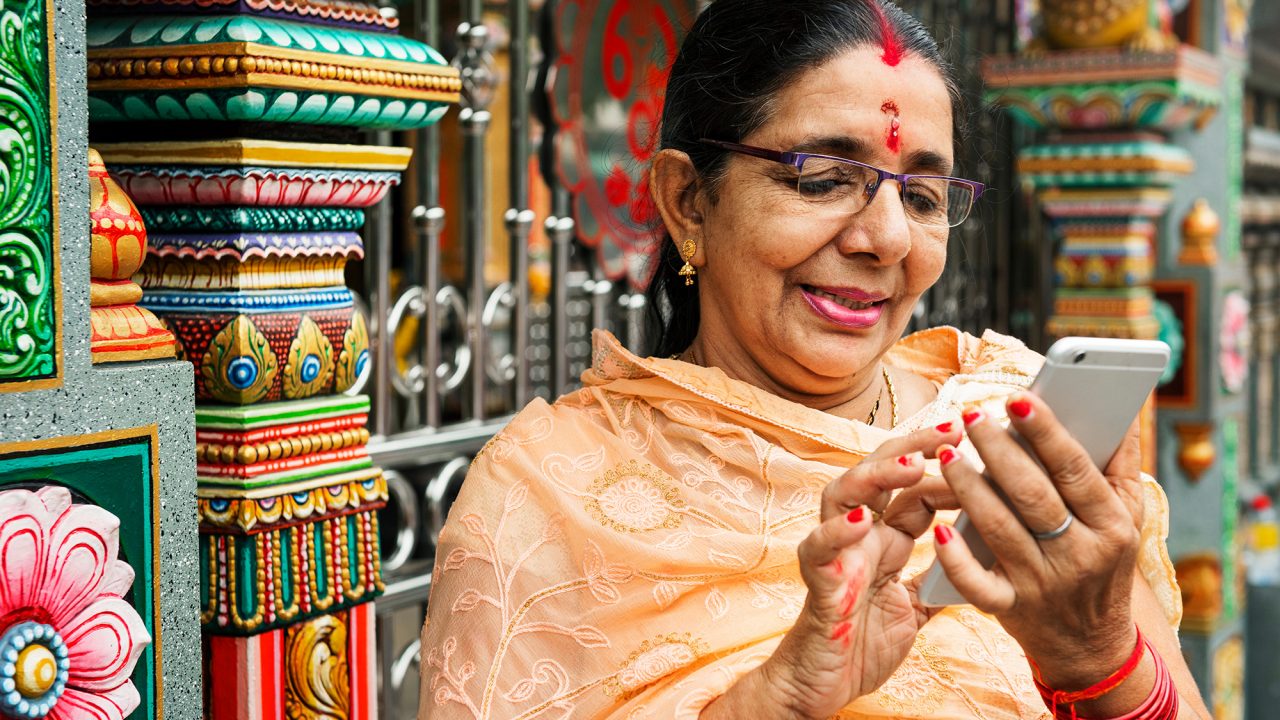Female entrepreneurs—who represent a growing share of emerging markets—are more likely to get smaller loans, higher interest rates, and increased penalties for issues related to out-of-date, gender-biased lending practices.
With 63 partners in 34 countries reaching more than 159 million women clients, Women’s World Banking works to create greater economic stability and prosperity for women.
As Inclusive Growth and Recovery Challenge awardees, Women’s World Banking and the University of Zurich assessed how algorithms in digital credit applications can increase lending to women borrowers, studied the applications of machine learning and AI to remove bias in lending, and explored the challenges facing digital financial services as a result of COVID-19 and the potential solutions.

The Challenge
One billion women manage their financial lives outside of the formal financial system. That means a quarter of the world’s women don’t have access to a safe place to keep and save money or a way to obtain credit, insurance, pensions, or other financial services.
Why? Sonja Kelly, vice president for research and advocacy at the Women’s World Bank, says it’s complicated.
Among the barriers: legal constraints in family law and inheritance determine a woman’s ability to own property or access collateral for financing. In addition, female entrepreneurs are more likely to operate in the informal sector, often from home, providing cash-based retail or services. Add to this unconscious or built-in bias in credit scoring processes.
The good news is that recent innovation in financial technology has accelerated opportunities for those in emerging markets to access financial services easily and affordably. For instance, digital financial services allow customers to conveniently deposit even small amounts of cash to make payments, pay bills, send remittances, or store money outside of the home—all through the use of a mobile device.
Still, access to these services is not available to all women.
For one, while mobile accounts for 85 percent of broadband connections in low- and middle-income countries (LMICs), there is a significant difference in mobile ownership between men and women, with women less likely to have a smartphone and less likely to access the internet from their mobile devices. If women can’t access these new digital financial services, including even small loans, they can’t build the credit necessary to scale up to larger loans.
Second, technology can perpetuate the same biases and exclusionary tendencies held by the people who create it. “If you put a machine on top of a human process, it’s just going to learn the human bias and make it worse,” says Kelly. Alternatively, if algorithms are built upon data composed primarily of men’s activity, they may not be built with women’s behavior patterns in mind. Women’s World Banking’s research and technical assistance work revealed that even when men and women have the same average credit score, women are more often rejected for loans.
Coders sitting in Silicon Valley are writing code for some of the biggest creditors in the world for emerging markets. The majority of those coders are men. A close look at the outcome of the algorithms they’re creating revealed that even when men and women have the same average credit score, women are more often rejected for loans.
If you put a machine on top of a human process, it’s just going to learn the human biases and make them worse.
Sonja Kelly Director of Research and Advocacy Women’s World Banking
The Solution
In 2021, Women’s World Banking and partner institution, the University of Zurich, applied for data.org’s Inclusive Growth and Recovery Challenge, which called for breakthrough ideas that harness the power of data to help people and communities thrive.
They were among the nine awardees who were granted funding, technical assistance, and expert guidance. With this support, the duo set out to use those resources to work with financial service providers around the world to increase credit access for low-income female entrepreneurs.
“Our work focused on solving the self-reinforcing challenges of women’s low data footprint,” said Kelly. “Their lower likelihood of seeking credit only serves to decrease their access and use of credit for their businesses. That has to change.”
Using data from financial institutions in three countries—India, Mexico, and Colombia—the team audited credit processes for gender bias using AI and machine learning techniques alongside other statistical methods.

They found two key trends.
First, “reject inference bias” existed in all three markets. This means a substantial subset of women rejected for loans should have been granted those loans. When compared to men who were also rejected, women often had higher credit scores on average. But the algorithms to assess applicants did not flag these creditworthy women, for myriad reasons. For example, an algorithm may rely on data points with a strong bias against women—for the amount of time spent in brick-and-mortar businesses (using mobile GPS data), even though women tend to spend more time working at home given their unpaid care responsibilities.
Second, they found a high risk of future bias in credit assessment in institutions that were heavily dependent on existing data to “train” algorithms to spot creditworthy applicants. The low representation of women in these existing datasets drove this risk.
Based on these findings, and recognizing that not every institution has months to spend auditing their risk process for bias, Women’s World Banking and the University of Zurich assembled a set of easy-to-understand analytical tools to begin conversations about gender credit bias within financial institutions.
Their “Check Your Bias” tool is a six-dimension scorecard for CEOs and data scientists alike to assess how well they make decisions about whether and how to lend to women compared to men. This toolkit includes an open-source code for advanced data analytics to spot bias among rejected applicants.
For the institution with the highest proportion of rejected women customers, they built a gender-fair algorithm to approve new loans for women entrepreneurs. More importantly, they are processing this algorithm for other institutions struggling with similar issues and making these tools publicly available on GitHub.
Gender inequity cascades through so many facets of society. But if we can start to give women greater access to financial prosperity, we can begin to really chip away at this inequity and see women thrive. And that not only affects the individual, it affects families, communities, and entire economies.
Sonja Kelly Director of Research and Advocacy Women’s World Banking
The Takeaway
“Analyzing for bias and implementing solutions should be a bespoke process, as each financial institution is unique,” said Kelly. “But we recognize that success means to scale and that the adage, ‘information is power’ really is true. This is what drove us to package all of these tools into a replicable toolkit for other financial services providers.”
They are also pursuing opportunities to use AI to increase women’s access to and use of other products, including savings, and insurance to close the global gender gap in women’s financial access.
“As we evolve this project, we’re focusing less on the actual tech used and more on the outcomes of that tech,” said Kelly. “We have to back into the bias, the decision making, and the algorithms. Those three variables can be extremely gendered. If we want to make digital financial services more accessible, we have to address those first.”
Women’s World Banking is excited to replicate and scale up its initial work by collaborating with a cohort of four institutions in 2023 to provide technical assistance and capacity-building for identifying and addressing biases, in addition to continuing to share these open-source products.
“Gender inequity cascades through so many facets of society,” said Kelly. “But if we can start to give women greater access to financial prosperity, we can begin to really chip away at this inequity and see women thrive. And that not only affects the individual, it affects families, communities, and entire economies.”

